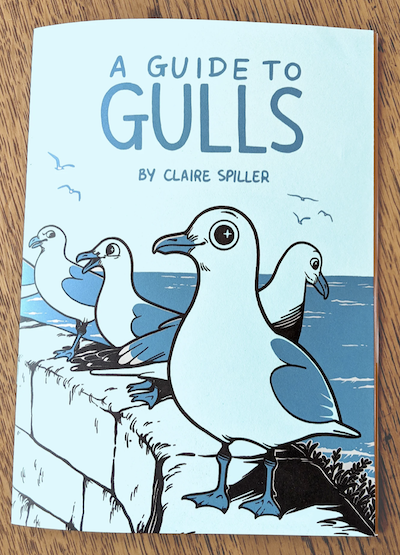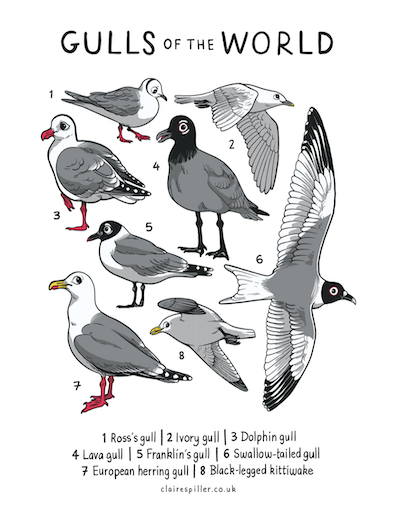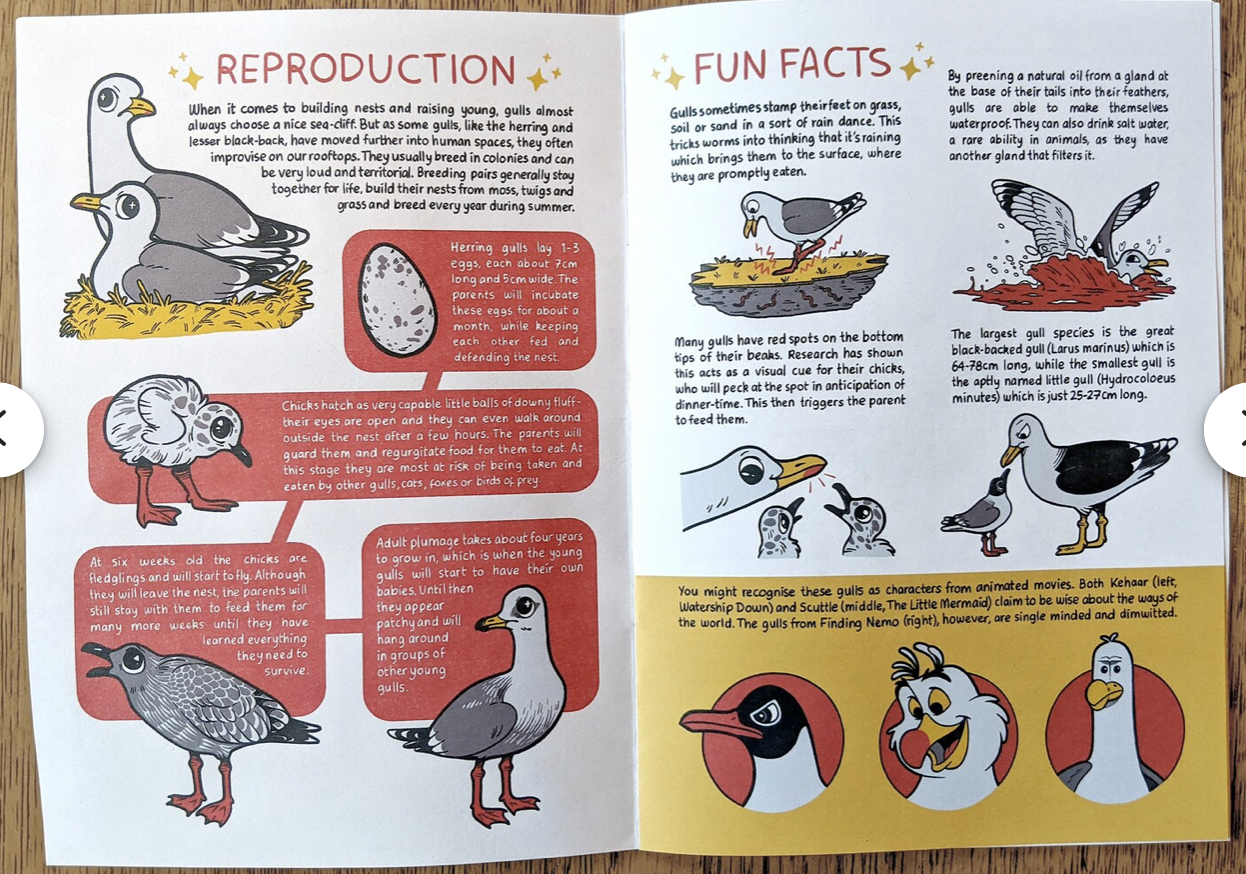Do some research into self-published comics, graphic novels, artist books or fanzines. Find examples that you find interesting or entertaining. Think about the form of this work. How has it been produced and what material are used? Can you find examples of inventive use of paper, binding, folding or printing?
Before undertaking this research task I was not that familiar with any of these areas of self-publishing. I was aware, however, of some of the self-publishing options available, such as Amazon Kindle Direct Publishing, which is a platform that allows users to upload their book to be published and sold in either a digital or physical format. Having been involved in a couple of projects that used this process, however, I found that unless you have the publicity and existing fanbase that will transform into sales, you are unlikely to receive very much financial compensation. It is a nice feeling to see your work in a completed, professional format, but it takes a great deal of effort and time.
I felt slightly biased towards self-published comics/graphic novels and was thus initially more inclined to find out more information about this category. I decided instead to explore fanzines as I did not know anything about this genre, but after reading the course material I was keen to learn more.
Fanzines
Fanzines or zines are self-published magazines that are created by individuals or via a group collaboration on topics of particular interest – they can be about anything. The freedom that zines offer the maker in terms of subject choice, content and production process, when compared to editorial restraints of professional publishing, allows for complete creative control to express personal opinions, beliefs and inclinations, as well as showing your own style and designs. Having total ownership of the work also enables the creator to make all the decision with regards to how the zines are distributed (e.g. as physical copies or online – or both) and what number are produced for potential distribution.
Zines are made up of fairly small number of pages that can be filled with absolutely anything regarding the subject being covered, including illustrations, collages, text, photographs or diagrams. The choice of materials that can be used for these is also limitless – for example, paint, ink, linocuts, digital media, and so on.
Although any size/dimension of paper can be used to produce a zine, as an example, a popular way of producing a zine involves starting with A4 sheets of paper that are then divided (not cut) into two A5 pages. Once filled with content, the original pages are photocopied or, in the case of digital zines, printed from a computer, before being compiled and stapled in the centre (or the pages can be sewn together). The A4 sheets can then be folded for the final A5 zine format to be revealed.
In general, zines have a short print run, often with less than 1,000 copies produced. This production process means zines are easy to reproduce and have low production costs. Fanzines are usually given away free of charge or for a minimal price, to cover production and postage costs, often at fanzine conventions where zine swaps can take place.
Examples of zines
I found it quite a challenge to find examples of zines that particularly interested me. Most of the readily available articles discussing zines reference those about punk music, football or science fiction. When I searched for zines or fanzines of topics that are more appealing to me, many of the returned results were standard, professional published magazines.
After further searching, I did manage to find a few zines on Etsy, which caught my eye.
I particularly enjoyed those created by Claire Spiller. I like the style of her illustrations, which are cartoony whilst still being accurate, along with the restrictive colour palette.

Spiller also shows a good understanding of white space and how to effectively use this to create clear and visually interesting compositions on the pages.

By utilising these visual assets, Spiller has been able to create an educational zines that includes bitesize information and facts on various animals (often those that are misunderstood and vilified).

It is difficult to tell whether Spiller’s illustrations have been drawn digitally or not, but the colour, text and layout has been added/produced on a computer. I cannot see staples or an obvious thread in the photographs, so I am not too sure how Spiller has compiled her zines, but they look very neatly and professionally bound.
Another example of a zine that caught my interest is Pet Cemetery, You Were Loved. Unfortunately, I am not sure who the creator is nor can I find any further details about it other than those outlined in a Skillshare YouTube video The History of Zines with Kate Bingaman-Burt (described at 02:55).
I just thought the concept of creating a zine about all of the pets the author has had, with a little story and hand-drawn ink illustration of each animal, is a really beautiful idea.
Final Thoughts
I am very glad that I chose to find out more about zines as it is certainly an area of illustration that appeals to me. I also like that there there seems to be a crossover between comics and zines, which is extremely interesting. I am now looking forward to the next exercise where I will be asked to create my own zine.
Bibliography
Akbar, R. (2018) How to make a zine – The Creative Independent. Available at: https://thecreativeindependent.com/guides/how-to-make-a-zine/ (Accessed 17 September 2023).
Brewer, J. (2020) 40 Years of the Casio keyboard celebrated in new free fanzine. Available at: https://www.itsnicethat.com/news/casio-fanzine-publication-011020 (Accessed 17 September 2023).
Broken Pencil (n.d.) Broken Pencil – The Magazine of Zine Culture and the Independent Arts. Available at: https://brokenpencil.com (Accessed 17 September 2023).
Elon University (2023) About Zines – Zines – LibGuides at Elon University. Available at: https://elon.libguides.com/zines/about (Accessed 17 September 2023).
Etsy (n.d.) Gull Zine Bundle / Seagull Zine A3 Poster & Enamel Pin. Available at: https://www.etsy.com/uk/listing/1026480062/gull-zine-bundle-seagull-zine-a3-poster (Accessed 17 September 2023).
Gharib, M. (2020) #Quaranzine: How To Make A Mini-Zine About Life In The Pandemic. Available at: https://www.npr.org/2020/05/28/863068957/how-to-make-a-mini-zine-about-life-during-the-pandemic (Accessed 17 September 2023).
Kleon, A. (2020) How to make a zine from a single sheet of paper. Available at: https://www.youtube.com/watch?v=ab4O9SWNl9g (Accessed 17 September 2023).
McCabe, A. (2020) ‘Quaranzines’ Bring Readers Together Despite Distancing. Available at: https://www.npr.org/2020/05/27/863291205/quaranzines-bring-readers-together-despite-distancing (Accessed 17 September 2023).
Skillshare (2022) The History of Zines with Kate Bingaman-Burt. Available at: https://www.youtube.com/watch?v=jxKBIMN9dgU (Accessed 17 September 2023).
Spiller, C. (2023) Claire Spiller Illustration. Available at: https://www.clairespiller.com/books/ (Accessed 17 September 2023).
Wikipedia (n.d.) Fanzine. Available at: https://en.wikipedia.org/wiki/Fanzine (Accessed 17 September 2023).
Wills, M. (2018) Before Blogs, There Were Zines. Available at: https://daily.jstor.org/before-blogs-there-were-zines/ (Accessed 17 September 2023).